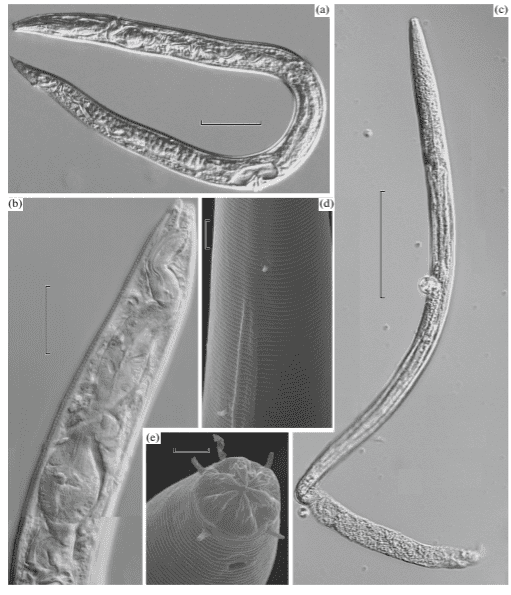These creatures have set a new record for cryogenic survival.

The nematodes isolated from permafrost deposits of the Kolyma River Lowland. Image credits: Shatilovich et al.
The Kolyma River in north-eastern Siberia flows along over 2,129 kilometers (1,323 miles) before ultimately emptying into a part of the Arctic Ocean. For the most part (about 250 days each year), the Kolyma is frozen to depths of several meters. Similarly, most of the path it flows along is surrounded by thick ice — after all, this is the permafrost land we’re talking about.
A while back, Russian biologists dug up more than 300 samples of frozen soil from the area. They found that the samples are teeming with microscopic life: single-celled cyanobacteria, green algae, and yeasts. But among these samples, they also found some macroscopic organisms — namely, some nematodes (Panagrolaimus aff. detritophagus and Plectus aff. parvus) — or, as most people would call them, roundworms.
Some were found in what was likely a ground squirrel burrow some 32,000 years ago, but had since caved in and frozen over. The others were found in a bore sample at a depth of around 3.5 meters (about 11.5 feet). They were carbon dated and found to be 42,000 years old. There’s still the off chance of contamination, but researchers have detailed their strict practices, and peer-review also confirmed the sterility procedures.
After identifying the worms, biologists placed them in a room kept at a mellow temperature of 20 degrees Celsius (68 Fahrenheit). It didn’t take long before they started showing signs of life. Within weeks, they were moving around and eating, setting a new record for how long animals can survive frozen in ice.
[panel style=”panel-info” title=”Longest survival” footer=””]In 2000, scientists found bacteria spores inside 250 million-year-old salt crystals, and after careful processing, were able to bring them back to life.
However, it’s important to keep in mind that the tricks bacteria pull off to survive so long cannot be applied to macroscopic creatures, which are much more complex. Roundworms are remarkably sturdy creatures (related to tardigrades), but they don’t even come close to bacteria. Yet even tardigrades, these incredibly resilient creatures, have “only” been known to survive for decades after preservation.
[/panel]
Aside from the main story, — that the creatures survived for 42,000 years, frozen — there are two ways to look at this. The first is optimistic and upbeat: by studying the mechanisms which allowed them to survive, we can learn more about cryomedicine and how creatures (potentially, alien creatures) survive in extreme environments.
“It is obvious that this ability suggests that the Pleistocene nematodes have some adaptive mechanisms that may be of scientific and practical importance for the related fields of science, such as cryomedicine, cryobiology, and astrobiology,” the researchers write in their study.
But there’s a darker side to the story. As global warming takes its course and much of the permafrost continues to melt, it could release a string of pathogens currently frozen. What the consequences will be is anyone’s guess.
This research was published in Doklady Biological Sciences.









